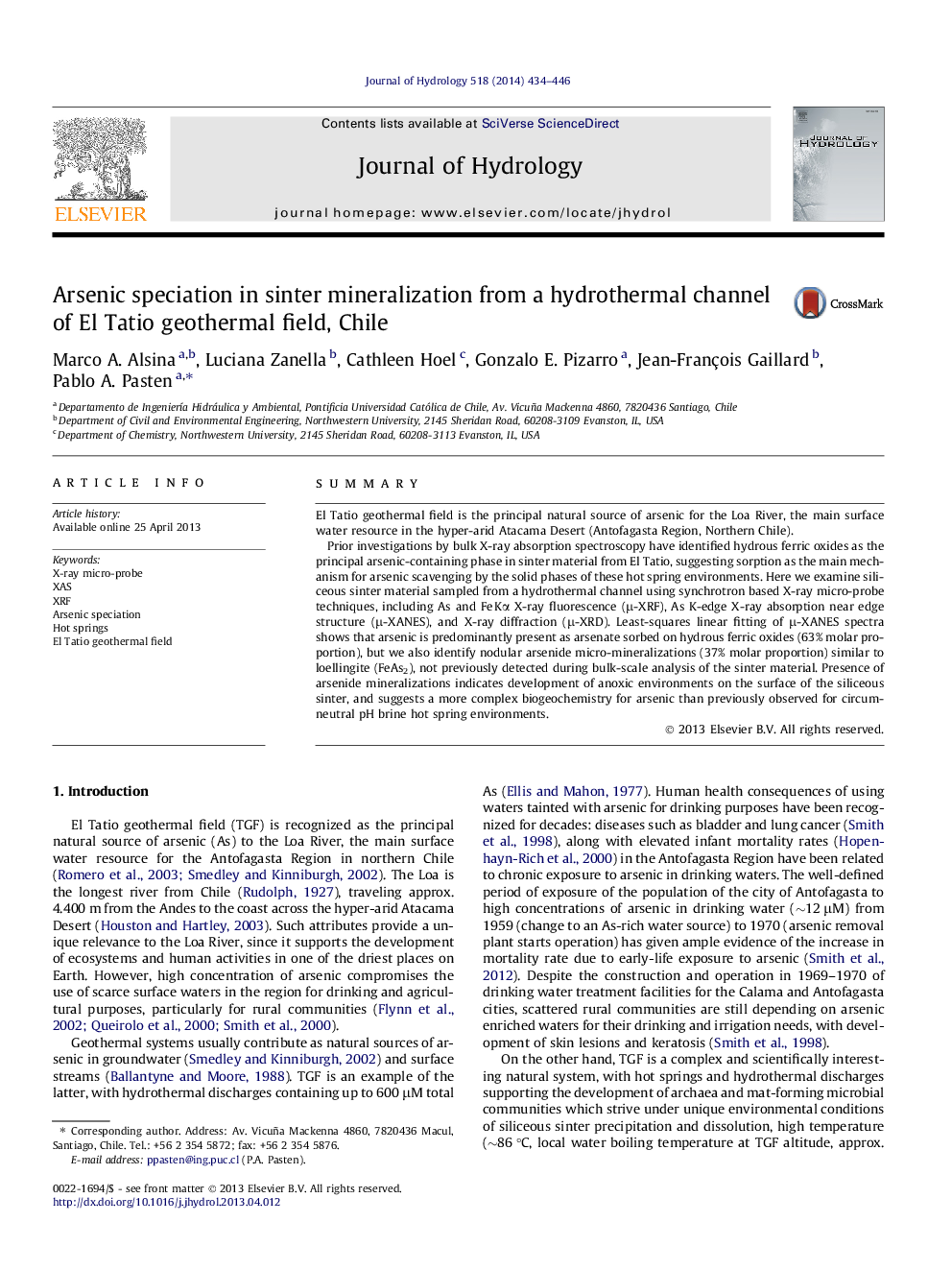| Article ID | Journal | Published Year | Pages | File Type |
|---|---|---|---|---|
| 4575971 | Journal of Hydrology | 2014 | 13 Pages |
•El Tatio geothermal field is the major natural source of As for the Atacama Desert.•We examine As presence in sinter material from Tatio by X-ray microprobe analysis.•We identify spatial associations between As and Fe, resembling nodules of 10 μm.•Micro-nodules correspond to arsenide mineralizations, similar to loellingite.•Arsenide micro-nodules were not identified in previous sinter bulk-scale analyses.
SummaryEl Tatio geothermal field is the principal natural source of arsenic for the Loa River, the main surface water resource in the hyper-arid Atacama Desert (Antofagasta Region, Northern Chile).Prior investigations by bulk X-ray absorption spectroscopy have identified hydrous ferric oxides as the principal arsenic-containing phase in sinter material from El Tatio, suggesting sorption as the main mechanism for arsenic scavenging by the solid phases of these hot spring environments. Here we examine siliceous sinter material sampled from a hydrothermal channel using synchrotron based X-ray micro-probe techniques, including As and Fe Kα X-ray fluorescence (μ-XRF), As K-edge X-ray absorption near edge structure (μ-XANES), and X-ray diffraction (μ-XRD). Least-squares linear fitting of μ-XANES spectra shows that arsenic is predominantly present as arsenate sorbed on hydrous ferric oxides (63% molar proportion), but we also identify nodular arsenide micro-mineralizations (37% molar proportion) similar to loellingite (FeAs2), not previously detected during bulk-scale analysis of the sinter material. Presence of arsenide mineralizations indicates development of anoxic environments on the surface of the siliceous sinter, and suggests a more complex biogeochemistry for arsenic than previously observed for circum-neutral pH brine hot spring environments.
